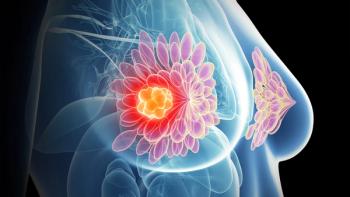
What Happens to Cancer Care When a Natural Disaster Hits?
Although they bring devastation to the whole community hit, catastrophes introduce a new level of difficulty for patients who are being treated for cancer.
Natural disasters like hurricanes, floods and tornadoes can happen anywhere.
Although they bring devastation to the whole community hit, catastrophes introduce a new level of difficulty for patients who are being treated for cancer.
What happens if their cancer center floods? Where can they receive treatment? How can they ensure medications aren’t missed?
In the wake of Tropical Storm Harvey, it’s important that patients and their caregivers know what options are available for emergency and non-emergency care.
Millions of people have been watching the tragedy unfold through videos and images of the destruction seen across parts of Texas. But they may not have seen the round-the-clock work being conducted inside the many hospitals and cancer centers to keep patients safe.
The best way to prepare for a natural disaster: create a plan of action.
Preparing for the Storm
Five years ago, Deborah M. Axelrod, M.D., director of clinical breast surgery, Perlmutter Cancer Center at NYU Langone Health in New York City, weathered Hurricane Sandy when it hit the northeast, bringing personal and professional barriers that she had to overcome.
In an interview, she reflected on her experiences and identified tips for patients with cancer who are dealing with a major natural catastrophe currently, or anticipate needing to be prepared for one in the future.
“Although it happened just about five years ago, my recollections of these experiences are very clear how it affected me personally and professionally,” she said.
Axelrod recalled the medical center being flooded and hospital employees working as a “human chain” to continue intensive care treatments while transporting patients safely. The hurricane forced surgeries to be moved to the Hospital for Joint Diseases, which is affiliated with NYU.
For patients to be ready, Axelrod explained that they should have more supplies than needed, including at least a week’s worth of prescriptions.
Another vital thing to prepare before the disaster is a list of phone numbers and addresses of doctors, pharmacists and other health care professionals.
In the case of an emergency, it is helpful to have the cell phone number of any oncologist they are seeing, especially if the patient is undergoing chemotherapy or is preparing for surgery.
Patients should also keep an open line of communication with their health care team before something hits.
Axelrod said they should ask these questions: What will happen if my treatment or surgery is delayed? What is the best plan of action in case of an emergency?
In addition, patients should have multiple routes to their cancer center and nearby hospitals planned in case an emergency happens in the middle of a storm, Axelrod added.
Disasters May Affect Insurance Coverage
Upon seeing the devastation that Tropical Storm Harvey brought, and continues to bring as flood waters linger, to eastern Texas, the United States Department of Health and Human Services declared a state of public health emergency.
This means that for patients who are insured under Medicaid, Medicare or the Children’s Health Insurance Program, certain requirements for care may be waived or modified. For example, these patients may be reimbursed if they seek care from someone who is not licensed in the state that they are in, but hold an equivalent license in another state.
In some cases, during a public health emergency, patients may also seek care from an out-of-plan provider, if that is the only center that they can get to safely.
Patients should talk with their health care providers and insurance companies before a disaster hits to understand what happens if their area goes into a state of public health emergency.
Insights from Tropical Storm Harvey
Before moving to Louisiana, Tropical Storm Harvey pounded Texas roadways, homes, schools and even some major cancer centers. MD Anderson Cancer Center and Texas Oncology’s daily routines were affected by flood waters that entered the hospitals.
While the clinics at MD Anderson were set to remain closed until Friday, Sept. 1, the cancer center had more than 500 patients being treated in their inpatient facility throughout the storm, and more than a dozen visited their emergency center.
“It’s a very fluid situation. We are working at the local level and as quickly as we can get our services. At this time, our outpatient areas are closed, but our inpatient, very importantly, is functioning,” Karen Lu, M.D., senior vice president and chief medical officer said during a press conference, noting that there were emergency cancer surgeries that needed to happen — and they did. “We will be communicating with patients to make sure that there is a plan for all of our patients.”
However, because the clinics were closed, many other patients missed their general appointments, chemotherapy sessions and oral medication administration. While some things may be OK to put off for a couple of days, others, like blood transfusions for patients with hematologic malignancies, are much dire. Receiving blood supplies and administering it to these patients has been one of the top priorities for the MD Anderson staff.
For patients in need or urgent care who could not make it to MD Anderson, Lu said that she encouraged them to go to their closest local hospital.
Catastrophes Bring the Oncology World Together
A positive out of Tropical Storm Harvey is that people have united.
This is especially true in the oncology community. When one oncology center or patient needed help, another center was not shy to step up.
MD Anderson took patients into its emergency center whether they had a cancer-related emergency or not, and Texas Oncology — a group of more than 170 oncology centers across the state — helped patients who weren’t able to travel to Houston for their care at MD Anderson or any other center.
“Texas Oncology has contacted MD Anderson, and told all chairs of the major departments if they have patients that need help, we’re happy to help. At least if we have a center close by, we’re happy to help those patients.” Debra Patt, M.D., breast cancer specialist and vice president of Texas Oncology, said in an interview.
However, Patt noted, “For most patients, cancer treatment is not an emergency. Dealing with their homes, and families and financial needs is the acute need. They need to deal with the acute needs, such as food and water and finding shelter.”
But for other patients, like those who are receiving daily radiation treatments or blood infusions, missing a number of treatments may have negative implications.
“Those patients are really a priority to get in as soon as possible, but even a couple days delay probably doesn’t make a difference,” Patt said.
All patients within the Texas Oncology health system can seek out treatment in any of the network’s locations, and patients being treated at MD Anderson who cannot go to Houston should not be shy to call up their nearby Texas Oncology center, as they have access to much of the treatment information from MD Anderson.
“I think the whole medical community in Texas is trying to support these patients,” Patt said.
Newsletter
Knowledge is power. Don’t miss the most recent breakthroughs in cancer care.













































































